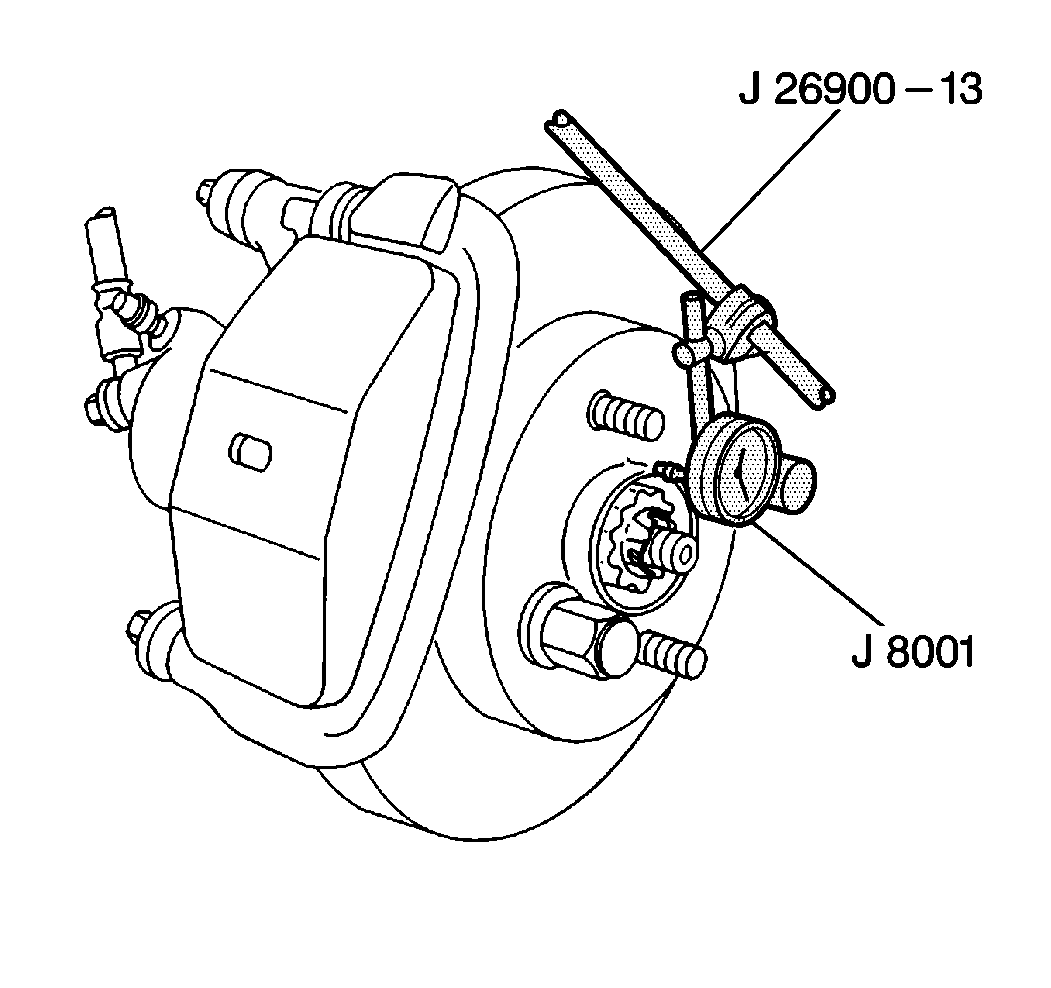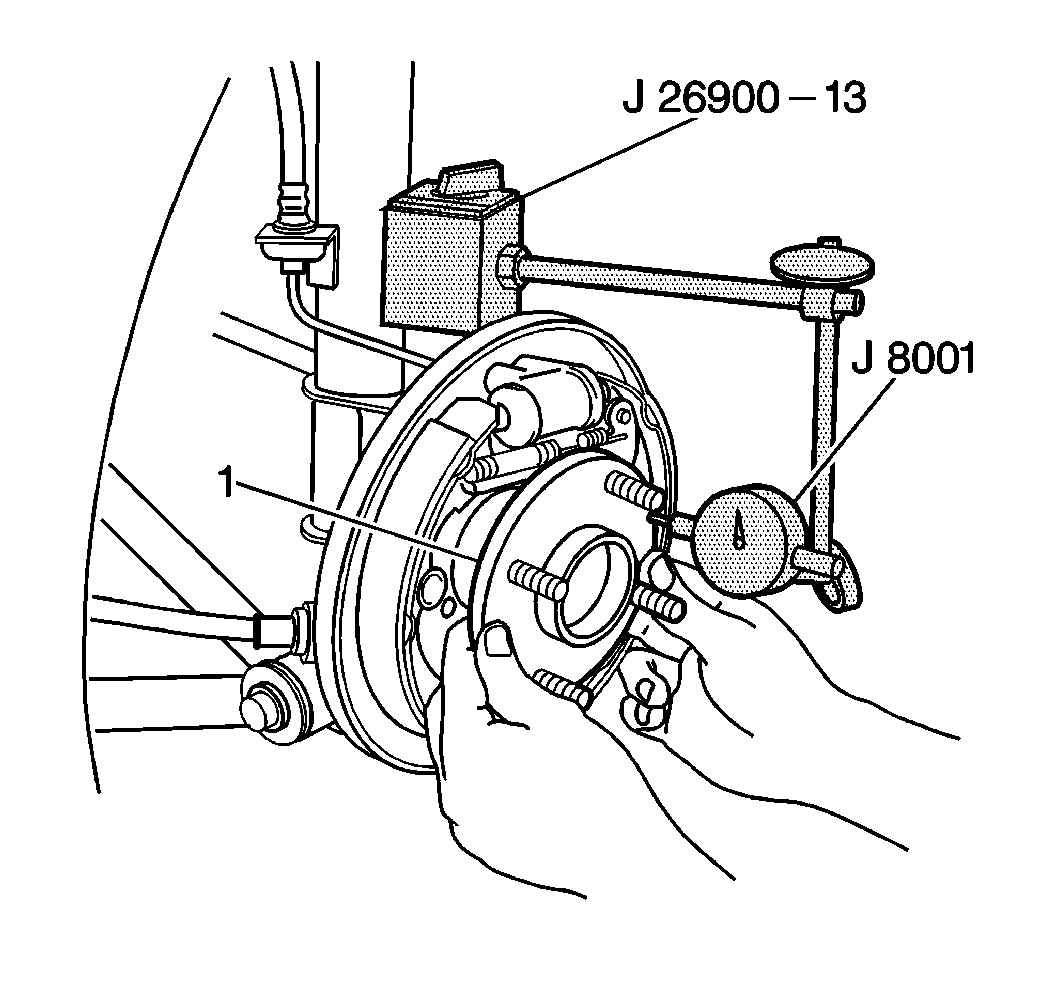Wheel Bearing Noise
A road test can usually indicate excessive wheel bearing noise. Sealed
wheel bearings emit a howling sound when the bearings go bad. This sound is
only present when the vehicle is moving. The sound is constant, unwavering
and increases in loudness and pitch when vehicle speed increases. If wheel
bearing noise cannot be positively diagnosed, or if the front or rear origin
of the noise cannot be determined, perform the following wheel bearing test:
- Raise the vehicle. Support the vehicle. Refer to
Lifting and Jacking the Vehicle
in General Information.
- Spin the wheels by hand. Inspect the wheels for the following
conditions:
- On two-wheel drive vehicles, spin the front wheels using a commercial
wheel spinner. Spin all the driven wheels using the engine.
- If noise can be heard from the passenger compartment, replace
the noisy wheel bearing's cartridge. Refer to
Front Wheel Bearing and Hub Replacement
in Front Suspension.
- Lower the vehicle.
Loose Wheel Bearings
Tools Required
Perform the following test in order to inspect for play in the bearing
cartridge assembly:
- Raise the vehicle. Support the vehicle. Refer to
Lifting and Jacking the Vehicle
in General Information.

- Remove the front or rear
tire and wheel assemblies. Refer to
Wheel Removal
in Tires and Wheels.
| 2.1. | Reinstall two wheel nuts in order to hold the rotor tight. |
| 2.2. | Compress the caliper piston in order to free the caliper assembly. |

- For drum brakes, use the
following procedure:
| 3.1. | Remove the brake drum. |
| 3.3. | Push and pull the hub unit by hand. If the hub movement exceeds
0.8 mm (0.03 in), replace the wheel bearing. |
- Install the tire and wheel assemblies. Refer to
Wheel Installation
in Tires and
Wheels.
- Lower the vehicle.


